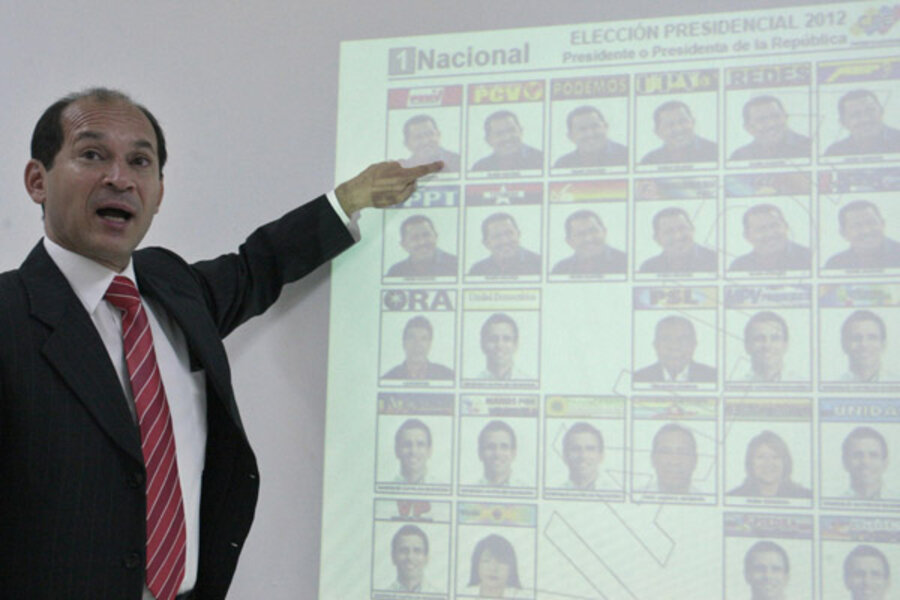Chavez dirty tricks? Venezuela prints a confusing ballot.
Loading...
• A version of this post ran on the author's blog, bloggingsbyboz.com. The views expressed are the author's own.
With a week to go before the election and the ballots all printed, the Venezuelan National Electoral Council (CNE) announced that votes for the Unidad Democratica party will go to a relatively unknown third party candidate (Reina Sequera) even though opposition candidate Henrique Capriles's picture is on the ballot in that spot (h/t Miguel). Additionally, three other spaces on the ballot where Capriles's face appears will be marked as null votes rather than votes for the opposition candidate.
The ballot spot in question is the very first time Capriles's picture appears on the ballot if you read left-right, top-bottom (as most people in this hemisphere do). The name of the party in the spot, Unidad Democratica, is very close to the Mesa de Unidad Democratica (MUD) that is the opposition's unified organization. The other spots for the Manos por Venezuela, Piedra y Cambio Pana parties, all with Capriles's picture, appear at the center and right side of the ballot and will be marked as null votes. With so little time to go before the election, it is almost guaranteed that thousands of Capriles voters will not hear the announcement of this change and will mistakenly mark their ballot in those spots.
This is a bureaucratic rule change that amounts to stealing votes from the opposition. In a close election, it could make a difference.
– James Bosworth is a freelance writer and consultant who runs Bloggings by Boz.





